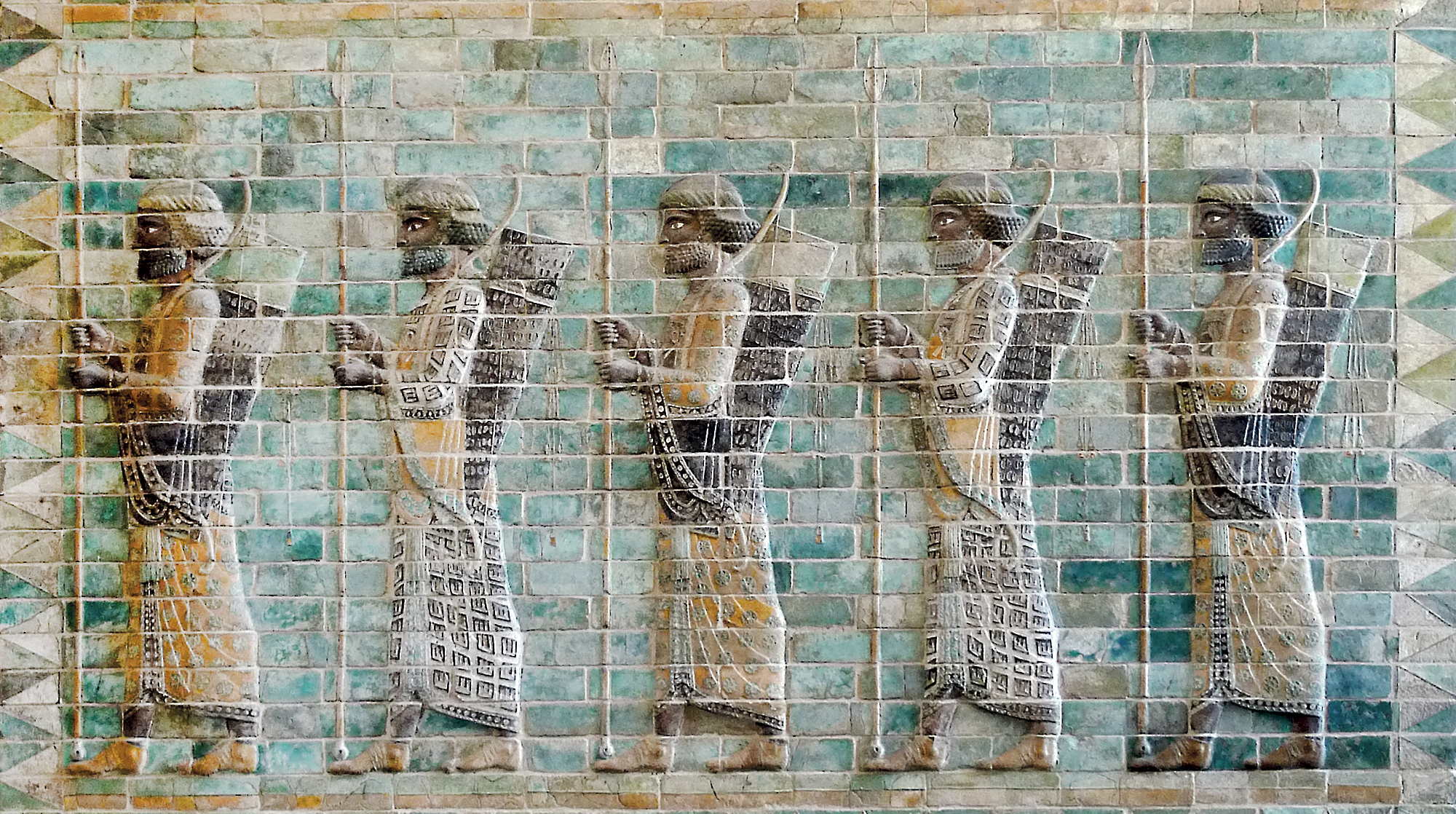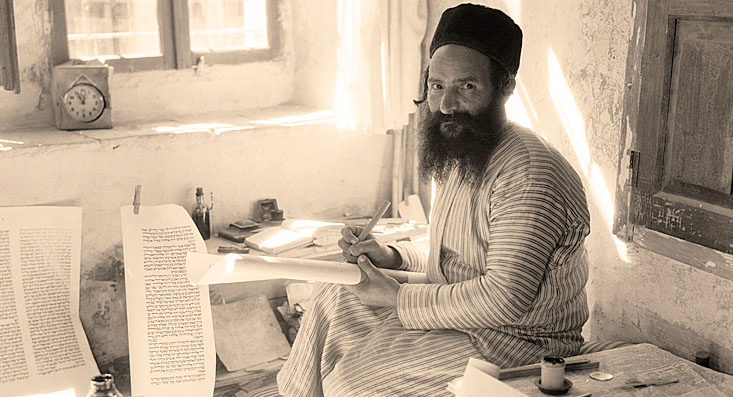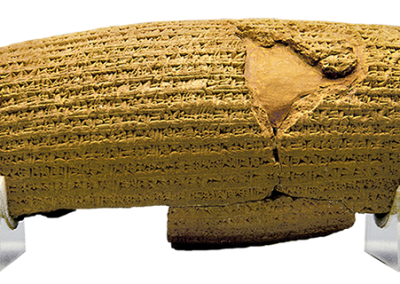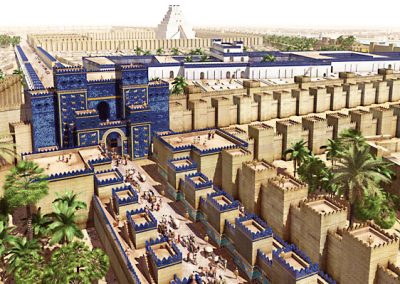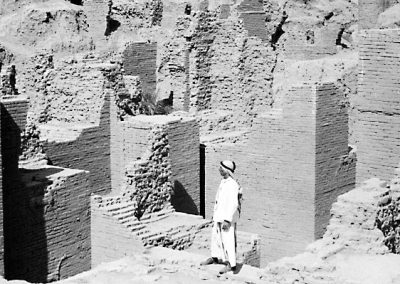
Bible, History, Archaeology
Bible,
History,
Archaeology
Return from exile
 Introduction
Introduction
Nearly 40 years after their deportation to Babylon, the Judean elite were allowed to return home by the Persian king Cyrus II the Great. The rebuilding of the Temple in Jerusalem and the establishment of a corpus of sacred texts marked the birth of Judaism.
© Article by Mireille Hadas-Lebel (professor emeritus at Paris-Sorbonne University, specialist in ancient Judaism) in «L'histoire du Proche-Orient, nouvelle édition 2018». La Vie-Le Monde special issue. With their kind permission.
Image opposite: artistic illustration of a king of the Persian Empire at the end of the 5th century BC © DR.
The Story
Reading: »When the Lord brought back the captivity of Zion, we were like people who dream [...] Those who have sown in tears, may they reap in joy! «(Psalms 126, French Rabbinate version).
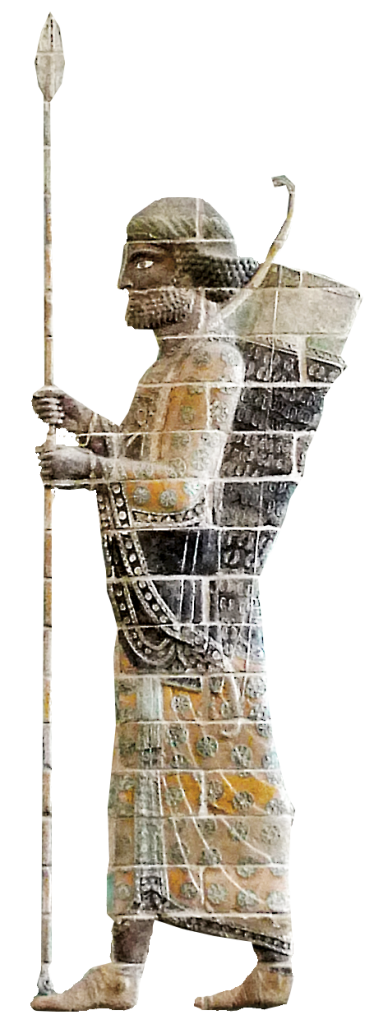
See the page on Cyrus II the Great →
In fact, as attested by an archaeological document from the period, the cylinder of Cyrus, engraved with cuneiform characters, the new conqueror, who entered Babylon without a fight, wanted to secure the support of all the peoples of his Empire by winning over their deities. The Judeans, or Jews, recognized his divine mission, earning him the title of «God's Anointed» or «Messiah».» (Isaiah 45,1).
It is in the biblical historical books of Ezra and Nehemiah, and in the prophets Zechariah, Haggai and Malachi, that we can follow the Judean vision of events at the beginning of the Persian period. For them, this return was the fulfillment of Jeremiah's prophecy of forgiveness after the storm and the return of the exiles. This return came barely two generations after the capture of Jerusalem. The rebuilding of the destroyed Temple, the only real place of worship for the Jews, appeared to be a priority, all the more so as it was included in Cyrus' edict.
A first wave of exiles returned under the leadership of the priest Joshua and Zerubbabel; the people expected a total restoration including «the two threads of fresh oil» (Zacharie 4,14), anointed priest and king, but Zorobabel disappears from the scene. Governors, often Jewish, such as Nehemiah, were sent to this corner of Persian Transeuphratene.
Even before the Temple was completed, worship resumed in Jerusalem with great joy. The hostility of the Samaritans succeeded in stopping the work, but Darius I confirmed the edict of Cyrus II. The Temple was inaugurated in the spring of the sixth year of Darius I's reign (515 BC), and Passover was solemnly celebrated.
 Image opposite: a darique, gold coin used in the Achaemenid Persian Empire and its sphere of influence. Traditionally, the first dariques are thought to have been minted during the reign of Darius I in the 6th century B.C. He was the first Achaemenid ruler to coin money in his own name. Public domain.
Image opposite: a darique, gold coin used in the Achaemenid Persian Empire and its sphere of influence. Traditionally, the first dariques are thought to have been minted during the reign of Darius I in the 6th century B.C. He was the first Achaemenid ruler to coin money in his own name. Public domain.
These events appear as a sign of divine forgiveness, symbolized in Zechariah's vision. From now on, the leaders of the people are determined to observe God's Law. The elite who had returned from Babylon seemed to have a better knowledge of it than the people who had settled in the country and were exposed to the idolatrous influence of the surrounding populations, whose sons, born of foreign families, were no longer even able to speak Judean. The Book of Ruth as a reaction to the measures taken at the time against mixed marriages: Ruth the Moabitess was the ancestor of King David.
The great frieze of archers or the “Immortals”
The Achaemenid Persian Empire is represented in the Louvre collections by elements of the sumptuous polychrome decoration of the palace built by Darius I in Susa (circa 525-486 BC).
The molded, glazed brick reliefs, which form a unique ensemble in the world, were brought back by M. Dieulafoy, who discovered them in 1885 and 1886, during his exploration of the palace.
We owe him the great frieze of the archers, that of the lions and the reconstitution of the capital of the Apadana or audience room of the Great King.
The identification of the archers is not certain: they probably represent the «immortals», the elite guards mentioned by Herodotus who accompanied the king on his campaigns. There were 10,000 of them, 9,000 of whom carried a silver-tipped spear, like that of the archers of Susa, whose silver color is reproduced by a white glaze. They are shown here in full regalia. Theo Truschel.
A rereading of the Torah
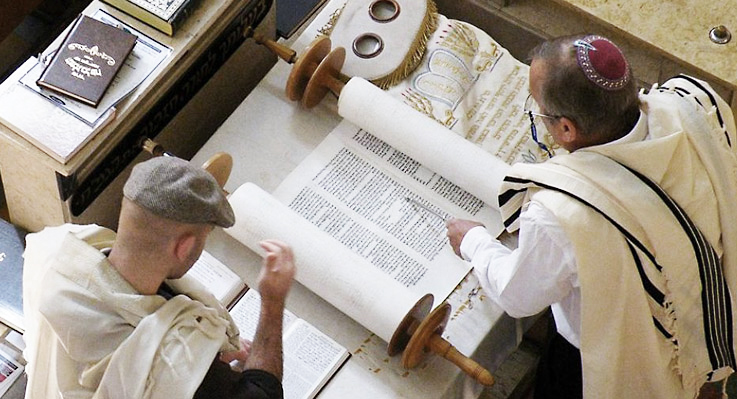
Image opposite: Torah study in a synagogue today. © DR.
This public reading, if it took place at all, was it done in the original Hebrew or was it already accompanied by an Aramaic paraphrase, the Targum, as some believe? Indeed, the Aramaic language, close to Hebrew, had become the official language of the Persian Empire. The «square» Aramaic script, considered more aesthetically pleasing, was also beginning to supplant the Phoenician-Hebrew script in use before the Exile. Ezra's work is difficult to separate from that of Nehemiah, appointed by the king as governor of his Judean brothers; the chronology of the books that bear their names is very confused indeed. The fact remains that a genuine religious restoration seems to have taken place in the 5th century BC under their leadership. Energetic measures were taken to reinforce Sabbath observance: on three occasions, Tyrian fish merchants found the gates of Jerusalem closed.
Writing new Bible books
The attitude of the exiled Jews seems to prove that Babylonia was the equivalent of the first synagogues, places of prayer as well as study, the earliest archaeological traces of which can be found in Lagid Egypt in the 3rd century BC. Biblical criticism tends to place the composition of the Pentateuch ; At the very least, it was written on the basis of pre-existing traditions. The Torah became a sacred text recognized by the Persian authorities as the legal basis of the Jewish way of life. The Persian period even appears, independently of the formation of the Torah, as a great moment of religious flourishing, which is also reflected on the literary level. In addition to the books already mentioned, which date themselves by their content, we must add the Chronicles books, as well as prophetic writings: chapters 40 to 55 of the book of’Isaiah, the «third Isaiah» (chapters 56 to 66), the book of Joël and the Jonas. Le Song of Songs, which was subsequently interpreted allegorically in both Jewish and Christian traditions, is also generally placed in Persian times, along with some of the Psalms, the Proverbs and the Job. The most Persian-tinted work is the book by’Esther set in the court of a king named Ahasuerus, sometimes identified with Xerxes.
Image opposite: a Yemeni scribe, in the early 20th century, writing a Torah text. Library of Congress.
This is how the Hebrew Bible gradually came to be divided into three parts: Torah, Prophets (Neviim) then Hagiographers (Ketuvim), a collection of various poetic, sapiential and historical writings. At the time, there was still no term for what we call «Judaism», but the Book of’Esther speaks of those who «make themselves Jews». This shows that the word yehudi no longer refers only to those who belong to the kingdom of Judah or the Persian province of yehud which took over from it, but applied to those who, whatever their origin, observed a particular way of life, which in Greek, around 100 BC, came to be called «Judaism».

Silver drachma with the Aramaic-stamped word «Yehud» (Judea).
She « would be the first Jewish play and the first play in the province of Judea. »
Israel Museum, Jerusalem.
The Cyrus Cylinder is a clay cylinder inscribed with a proclamation by Cyrus II, King of Persia, in Akkadian cuneiform © Théo Truschel.
The Cyrus Cylinder is a clay cylinder inscribed with a proclamation by Cyrus II, King of Persia, in Akkadian cuneiform.
Artistic general view of the Ishtar Gate, one of the entrance gates to the city of Babylon. The city's palace and ziggurat can be seen in the background. © D.R.
Artistic general view of the Ishtar Gate, one of the entrance gates to the city of Babylon. The city's palace and ziggurat can be seen in the background.
A general view of the Babylonian ruins discovered by R. Koldewey between 1899 and 1917 © D.R.
A general view of the Babylonian ruins discovered by R. Koldewey between 1899 and 1917.

 Introduction
Introduction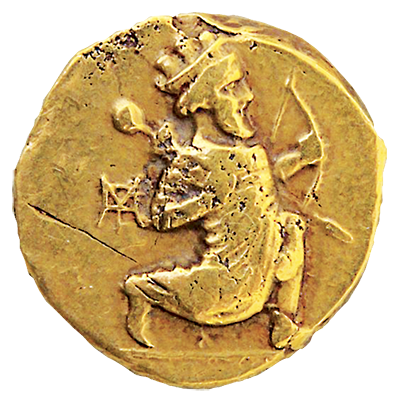 Image opposite: a darique, gold coin used in the Achaemenid Persian Empire and its sphere of influence. Traditionally, the first dariques are thought to have been minted during the reign of Darius I in the 6th century B.C. He was the first Achaemenid ruler to coin money in his own name. Public domain.
Image opposite: a darique, gold coin used in the Achaemenid Persian Empire and its sphere of influence. Traditionally, the first dariques are thought to have been minted during the reign of Darius I in the 6th century B.C. He was the first Achaemenid ruler to coin money in his own name. Public domain.